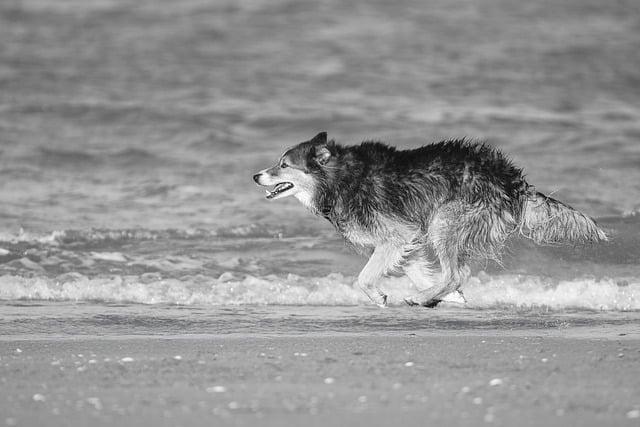In a quiet suburban neighborhood, a family welcomed a new member: a German Shepherd named Max. One evening, as shadows crept across the yard, an unfamiliar figure approached their home. Max, sensing danger, stood tall, his deep bark echoing through the night. The intruder hesitated, then retreated, deterred by Max’s unwavering presence. This incident solidified Max’s role as the family’s protector. With loyalty and courage, German Shepherds are not just pets; they are guardians, making them one of the most protective dog breeds. Choose wisely for your family’s safety.
Contents
- Understanding the Traits of the Most Protective Dog Breeds
- Evaluating Temperament and Behavior for Optimal Protection
- Training Techniques to Enhance Your Dogs Protective Instincts
- Choosing the Right Breed for Your Lifestyle and Security Needs
- Q&A
Understanding the Traits of the Most Protective Dog Breeds
When considering the most protective dog breeds, it’s essential to recognize the key traits that contribute to their guarding instincts. These dogs are often characterized by their **loyalty**, which drives them to form strong bonds with their families. This loyalty translates into a natural desire to protect their loved ones from perceived threats, making them vigilant guardians. Their unwavering commitment to their owners is a fundamental aspect of their protective nature.
Another significant trait of protective breeds is their **intelligence**. Many of these dogs possess a keen ability to assess situations and make quick decisions. This intelligence allows them to distinguish between normal activities and potential dangers, enabling them to react appropriately. Breeds such as the German Shepherd and Rottweiler are known for their problem-solving skills, which enhance their effectiveness as protectors. Their ability to learn commands and cues quickly further amplifies their protective capabilities.
Physical strength and agility also play a crucial role in the protective nature of certain breeds. Dogs like the Belgian Malinois and Doberman Pinscher are not only muscular but also possess remarkable speed and agility. This combination allows them to respond swiftly to threats, whether it be an intruder or a dangerous situation. Their physical prowess, coupled with their protective instincts, makes them formidable guardians, capable of defending their territory and loved ones.
Lastly, the **temperament** of protective breeds is a vital factor in their guarding abilities. Many of these dogs exhibit a natural wariness towards strangers, which is an essential trait for any protective animal. However, it’s important to note that this wariness should be balanced with a friendly disposition towards their family. Breeds like the Boxer and Bullmastiff are known for their gentle nature with loved ones while remaining alert and cautious around unfamiliar individuals. This duality makes them not only protective but also loving companions.
Evaluating Temperament and Behavior for Optimal Protection
When considering a dog for protection, it is crucial to assess their temperament and behavior. A protective dog must possess a balance of traits that not only ensure safety but also foster a strong bond with their owner. **Key characteristics** to look for include:
- Confidence: A self-assured dog is less likely to be intimidated and more likely to stand their ground when faced with a threat.
- Alertness: A vigilant dog will be aware of their surroundings and quick to react to any unusual activity.
- Trainability: A dog that is eager to learn and follow commands can be effectively trained to respond appropriately in various situations.
Moreover, the dog’s socialization history plays a significant role in their protective instincts. Dogs that have been exposed to a variety of people, environments, and experiences are generally better equipped to discern between normal and threatening situations. **Socialization should include**:
- Interactions with different breeds and sizes of dogs.
- Exposure to various environments, such as busy streets, parks, and homes.
- Positive experiences with strangers to help them distinguish between friend and foe.
Additionally, the breed’s inherent traits can influence their protective capabilities. Certain breeds are renowned for their guarding instincts and loyalty, making them ideal candidates for protection. **Notable breeds include**:
- German Shepherds: Known for their intelligence and versatility, they excel in protection and obedience.
- Rottweilers: Their strength and confidence make them formidable protectors when properly trained.
- Doberman Pinschers: With their keen senses and loyalty, they are both affectionate companions and vigilant guardians.
Ultimately, selecting the right dog for protection involves a comprehensive evaluation of both temperament and behavior. A dog that exhibits the right mix of confidence, alertness, and trainability, combined with proper socialization and breed characteristics, will not only provide optimal protection but also become a cherished member of the family. Investing time in understanding these factors will lead to a rewarding partnership that ensures safety and companionship.
Training Techniques to Enhance Your Dogs Protective Instincts
To cultivate your dog’s protective instincts, it is essential to employ a variety of training techniques that not only enhance their natural abilities but also ensure they respond appropriately in different situations. One effective method is **socialization**. Exposing your dog to various environments, people, and other animals from a young age helps them develop confidence and discernment. This exposure allows them to differentiate between normal and threatening situations, which is crucial for a protective dog.
Another vital technique is **obedience training**. Teaching your dog basic commands such as ”sit,” “stay,” and “come” establishes a foundation of trust and communication. When your dog understands and follows commands, they are more likely to respond effectively in high-stress situations. Incorporating advanced commands like “guard” or “watch” can further refine their protective instincts, ensuring they know when to be alert and when to act.
Utilizing **positive reinforcement** is also key in developing a protective dog. Rewarding your dog with treats, praise, or playtime when they exhibit protective behaviors encourages them to repeat those actions. This method not only strengthens the bond between you and your dog but also fosters a sense of security, making them more likely to take on the role of protector when needed. Consistency in rewards is crucial; ensure that your dog understands what behaviors are being reinforced.
Lastly, consider incorporating **controlled exposure to threats** during training sessions. This could involve using a decoy or a safe, simulated environment where your dog can practice their protective instincts without real danger. Gradually increasing the intensity of these scenarios will help your dog learn to assess threats accurately and respond appropriately. Remember, the goal is to create a well-balanced protector who knows when to act and when to remain calm, ensuring both their safety and that of their family.
Choosing the Right Breed for Your Lifestyle and Security Needs
When it comes to selecting a dog that aligns with your lifestyle and security needs, understanding the characteristics of various breeds is essential. Different breeds possess unique traits that can significantly influence their suitability as protective companions. For instance, if you lead an active lifestyle, a breed like the **Belgian Malinois** or **German Shepherd** may be ideal, as they are not only protective but also require regular exercise and mental stimulation. These breeds thrive in environments where they can engage in activities such as agility training or obedience work, making them perfect for active individuals or families.
On the other hand, if your living situation is more subdued, consider breeds like the **Rottweiler** or **Doberman Pinscher**. These dogs are known for their loyalty and protective instincts, yet they can adapt well to a quieter lifestyle. They are often content with moderate exercise and can be excellent watchdogs, alerting you to any potential threats while remaining calm in a home environment. Their imposing presence can deter intruders, providing peace of mind without the need for constant activity.
For those who prioritize companionship alongside protection, breeds such as the **Boxer** or **Bullmastiff** offer a perfect blend. These dogs are not only affectionate and playful but also possess a natural guarding instinct. They are known for their strong bond with families, making them excellent choices for households with children. Their protective nature ensures that they will defend their loved ones, while their playful demeanor keeps the atmosphere lively and engaging.
Ultimately, the right breed for you will depend on your specific needs and lifestyle. Consider factors such as the size of your living space, your activity level, and the amount of time you can dedicate to training and socialization. By carefully evaluating these aspects, you can choose a breed that not only provides security but also complements your way of life, ensuring a harmonious relationship between you and your canine companion.
Q&A
-
What breeds are considered the most protective dogs?
Some of the most protective dog breeds include:
- German Shepherd
- Rottweiler
- Doberman Pinscher
- Belgian Malinois
- Boxer
These breeds are known for their loyalty, intelligence, and strong guarding instincts, making them excellent protectors for families and properties.
-
How do protective dogs behave around strangers?
Protective dogs typically exhibit cautious behavior around strangers. They may:
- Bark to alert their owners
- Stand their ground
- Exhibit a strong, confident posture
This behavior is a natural instinct to protect their territory and loved ones, ensuring safety while remaining loyal companions.
-
Can any dog be trained to be protective?
While many dogs have protective instincts, training plays a crucial role. With proper socialization and obedience training, many breeds can learn to be protective. Key factors include:
- Early socialization with various people and environments
- Consistent training methods
- Positive reinforcement techniques
However, it’s essential to remember that not all dogs will naturally excel in protective roles.
-
What are the responsibilities of owning a protective dog?
Owning a protective dog comes with significant responsibilities, including:
- Providing regular training and socialization
- Ensuring proper exercise and mental stimulation
- Understanding the breed’s specific needs and temperament
By fulfilling these responsibilities, owners can cultivate a well-balanced, protective companion that enhances safety while being a loving family member.
choosing the most protective dog goes beyond breed; it involves understanding their temperament, training, and your lifestyle. Invest in a loyal guardian that not only protects but also enriches your life with companionship and love. Choose wisely!

大家好,我是彼得潘,專業的手法身體治療師。我喜歡探索和研究各種主題,並透過與人工智慧的合作分享專業、實用、有趣的文章。我們定期進行人工審核,以確保內容的準確性。如果您發現文章中有任何不準確的地方,請隨時與我們聯繫,我們會及時糾正。您可以透過 [email protected] 與我們聯繫。



